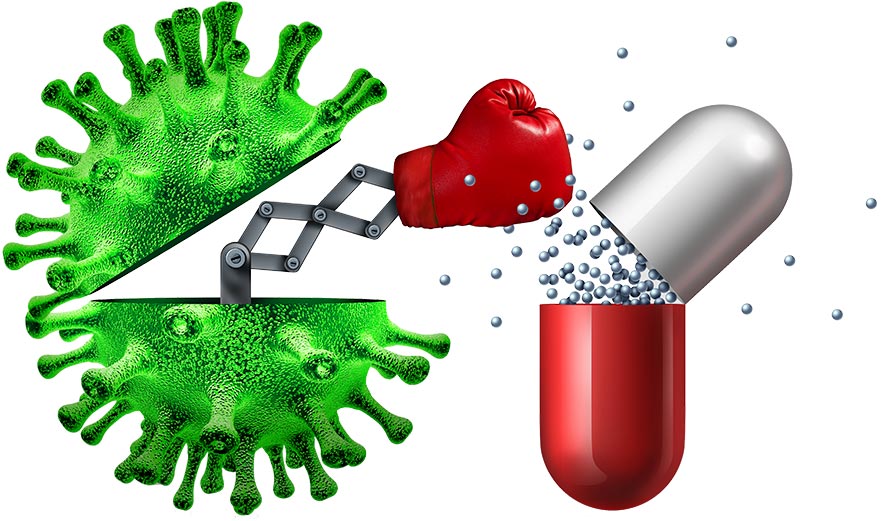
(Photo : Antibiotic Research UK)
Antibiotic Resistance Research
Antibiotics may be good to fight an infection, but too much dependency on them can lead to severe outcomes, a team of researcherswho analyzed the risks associated with overuse of antibiotics, warns.
By 2050, 39 million people could be killed by antibiotics resistance infections, according to the findings published in The Lancet.
Antimicrobial resistance (AR) is an occurrence where the germs change and develop an ability to protect themselves from the drugs made to kill them. According to Mayo Clinic, bacteria which survive the antibiotic treatment multiplies and passes on its resistant properties to other bacteria. Antibiotic resistance infections are 'difficult' or 'impossible' to treat, experts from CDC, said.
Researchers from the Global Research on Antimicrobial Resistance (GRAM) Project used statistical modeling to evaluate deaths caused by antimicrobial resistance (AMR) infections.During the study, Dr. Stein Emil Vollsetand his team analyzed 22 pathogens, 84 pathogen-drug combinations and 11 infectious syndromes in 204 countries. They used 520 million individual records collected from hospitals and other sources. They also looked at data related to antibiotic use and death records.
Between 1990 and 2021, antimicrobial resistance (AMR) infections killed more than one million people every year, researchers said. They expected a 70 percent increase in fatality rates in 2050 compared to 2022 and estimated 1.91 million deaths arising directly from AMR related infections after 25 years.
There was a 50 percent drop in AMR associated deaths among children under five, while there was an 80 percent increase of fatality rates among people aged 70 years between 1990 and 2021.
They noticed a temporary decline in AMR related deaths in 2021 (1.14 million deaths) compared to 2019 (1.27 million).
The areas affected worst by AMR related direct deaths were western sub-Saharan Africa, Tropical Latin America, high-income North America, Southeast Asia, and South Asia.
Gram-positive bacteriamethicillin-resistant S. aureus (MRSA) caused 130,000 deaths in 2021, compared to 57,200 in 1990. Gram-negative bacteria's resistance to antibiotics carbapenems increased from 127,000 in 1990 to 216,000 in 2021.
Situation to Worsen in 5 Years
Researchers expected the trend to worsen over the next few years. South Asia, mainly India, Pakistan and Bangladesh will be more affected by AMR in the future and there will be 11.8 million AMR related deaths inthese countries in the next 25 years.
Concerned by the findings, researchers highlighted the need for interventions like vaccination, infection prevention, lowering dependency on antibiotics and research. Concentrating more on overall infection care and access to antibiotics, could prevent 92 million deaths related to AMR between 2025 and 2050, they said.
"There has been real progress in tackling AMR, particularly among young children, but our findings indicate more must be done to protect people from this growing global health threat. By 2050, resistant infections could be involved in some 8 million deaths each year, either as the direct cause of death or as a contributing factor," study author Dr. Vollsetfrom the Norwegian Institute of Public Health, said in a statement.
"To prevent this from becoming a deadly reality, we urgently need new strategies to decrease the risk of severe infections through vaccines, new drugs, improved health care, better access to existing antibiotics, and guidance on how to use them most effectively."









